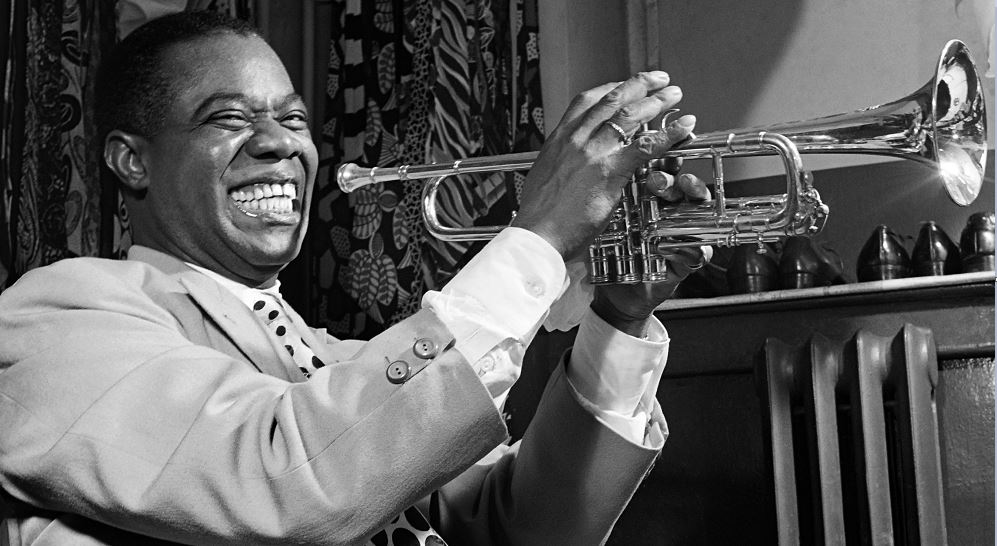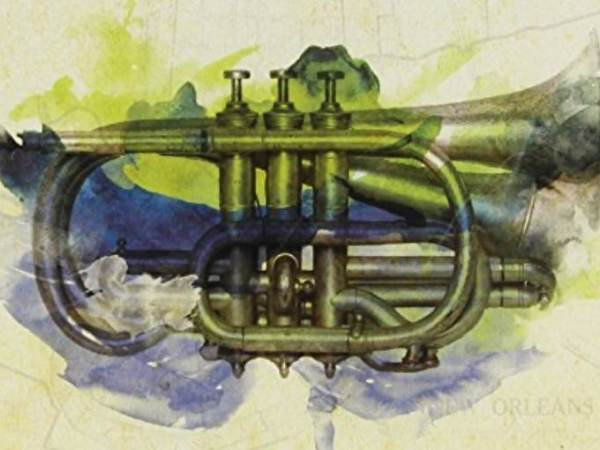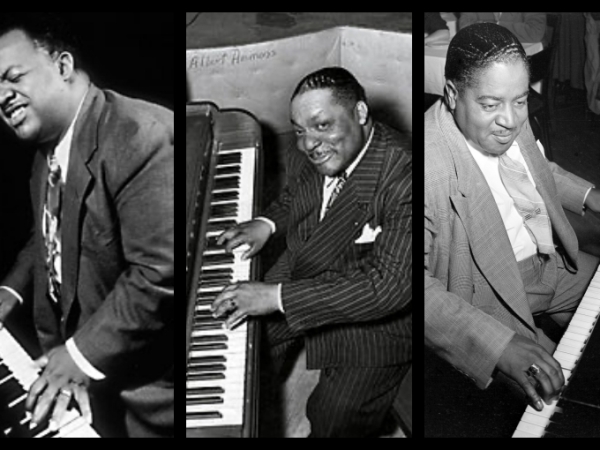New Orleans is the birthplace of jazz and the home of many of its pioneers. New Orleans jazz is a forerunner of the many forms of jazz music we know today.
In this article, we will look back at the birth of jazz music in New Orleans. Who were the pioneers and ambassadors of the genre? And how did ethnicity play a role during the turn of the century?



Before we dig into the history of jazz music, we need to be aware of New Orleans’ history. The State Louisiana was bought from France in 1803. The Louisiana Purchase resulted in a lift of the trade restrictions and, the arrival of the steamboat enhanced commerce as New Orleans became an important hub for cargo. This economic boost made the city more popular what caused its population to grow exponentially.
The success of New Orleans did not last. The American Civil War, political corruption, and the arrival of the railroad had their impact on the city. Trading hubs in America start growing elsewhere and, it did not take long before New Orleans was in debt. By the time jazz music emerged, the city was in recession. The population, which was exponentially growing, started to decline. Tropical storms and hurricanes were frequent, and New Orleans began to flood. The city had no sewer system what caused an unpleasant and excessive number of insects. It was so bad that musicians reported they had to wear masks during performances. New Orleans’ problems caused its death rate to be 60% higher compared with other major American cities.
The neighborhood that is claimed to be the birthplace of jazz is Storyville, a red-light district in New Orleans. Although, not all music historians agree to this and studies have shown that jazz music emerged and developed all over New Orleans. There are records of the music being played at dancehalls, on boats, in parks, and on the street. Some claim that it would have even been more complex for the music to be played in Storyville as, according to reports, police raids happened there more frequently, and it were the African American musicians who were arrested first. Donald Marquis’ study of Buddy Bolden, an important and decisive figure in jazz music, shows that he and many other jazz musicians drew their inspiration from the church and not from the nightlife in New Orleans. Pastors who sang in Baptist Churches had a similar rhythm to the jazz rhythm of that time.
In New Orleans, concerts “on-the-move” happened frequently, for example, at funerals. Because of the high death rate, there was a high demand for these parading brass bands. Marching brass bands, such as Excelsior Brass Band or Onward Brass Band, were active during the 1880s. Their formation started with trombones in the front, followed by the bass, tubas, and baritones. In the next row, you find the alto horns and the clarinets followed by the trumpets. At the end of the parade, we find percussion instruments. These marching brass bands would play a variation of music genres including quadrille, polka, 2-step, mazurka, etc. Parades were common in America but what makes these New Orleans brass bands unique is that their performance was an invitation to dance. They would call it second-line parades, where the dance audience is the second line and the brass band the first. You became part of the community, a tradition that flew out of circle dancing at Congo Square.


At the turn of the century, ragtime music was popular in New Orleans, mainly thanks to the contributions of Scott Joplin. Ragtime is a form of piano music that uses syncopation of the weaker beats. Syncopation is a small interruption in the rhythmical flow by making some accents fall off-beat. In short, syncopation is created by the beats between the beats, and they are fundamental for the musical structure of ragtime (and boogie-woogie that emerged simultaneously in Texas). A result of ragtime’s popularity was that musicians start using syncopation in traditional compositions to play them in a more “ragged” fashion.
Who played a key role in the birth of New Orleans jazz, and is considered the first jazz musician, is Buddy Bolden (born Charles Joseph Bolden). Buddy Bolden was an American cornetist who learned to play music at school and in church. Unique is that, unlike many other musicians, Bolden didn’t start his career by joining a brass band. Instead, he joined a string ensemble and earned money by playing at dancehalls.
At the end of the century, his band got noticed thanks to Bolden’s use of syncopation, his ability to improvise, and his use of blues structures. I like to think that Bolden’s focus on blues was the biggest contribution to jazz until Louis Armstrong changed the course of the genre. Bolden was an example for many other musicians and one by one all of them start experimenting with syncopation and improvisation. The growing pool of musicians doing this is described as the birth of jazz in New Orleans. This practice of using syncopation in melodies from different music genres caused styles to blur and blend. The music would get more similarities in rhythm and structure what was another important milestone in the creation of jazz.
Buddy Bolden was known for playing loud. He played so loud that he was not allowed to practice inside the house so instead, he practiced on his porch. Neighborhood children would gather around them to listen and start calling him “The King“. Hence the nickname Buddy ‘King’ Bolden. He would often play at a concert hall in New Orleans called Odd Fellows and Masonic Dance Hall (or Eagle Saloon). Before the concert, Bolden would stick out his cornet and do what he called “calling his children home”. He played so loud and, his reach was so far that people from the surrounding streets gather at the building to listen. This became his trademark and, the habit got also described in the lyrics of Buddy Bolden’s Blues (also called Funky Butt):
“Thought I heard, buddy bolden shout, Open up that window, and let that bad air out, Open up that window, and let that stinky air out. Thought I heard buddy bolden say”
Lyrics to Buddy Bolden’s Blues
Buddy Bolden’s career was short. He had a drinking problem and struggled with his mental health. He was arrested multiple times and was placed in an asylum after he was declared mentally insane. Unfortunately, there are no recordings in existence. There are some rumors that Bolden made some phonograph cylinder recordings. So far, none surfaced. Thirty years after his death, his music appeared in print and, musicians started to record his work. However, the sound of jazz evolved and, the question is if these later recordings correctly represent how Buddy Bolden’s music originally sounded.
If Buddy Bolden was the inventor or creator of jazz music is up for discussion but, we can conclude that he was an important and decisive figure in the transformation.
Buddy Bolden’s transformation was further built out by many musicians such as Jelly Roll Morton, Joe ‘King’ Oliver, Willie Gary ‘Bunk’ Johnson, Edward ‘Kid’ Ory, and later Louis ‘Satchmo’ Armstrong.
Jelly Roll Morton (born in New Orleans as Ferdinand Joseph LaMothe) was an American ragtime and jazz pianist, composer, and producer. He is considered one of the greatest jazz arrangers and many claim his contributions exceed Buddy Bolden’s. Morton’s jazz gave it a sense of itself via his melodic constructions using improvisation and musical breaks. His first income was as a producer but, in the 1920s he started to focus more on his own music. Jelly Roll Morton’s career peak around the time the jazz age began. He brought together musicians, including Kid Ory, and they called themselves Jelly Roll Morton and His Red Hot Peppers. They made several well-rehearsed recordings for the Victor Talking Machine Company. In 1924, he recorded his composition titled King Porter (A Stomp). The song was recorded together with the iconic New Orleans musician King Oliver and features a duet between King Oliver’s cornet, and Jelly Roll Morton‘s piano.
Other recordings he made during that decade were in partnership with the New Orleans Rhythm Kings, an influential jazz band featuring white musicians. Their recordings are of historical importance as they countered segregation of African American and white musicians in the recording studio.
Jelly Roll Morton’s career declined during The Great Depression in the 1930s but grew again in 1938 thanks to a letter he wrote to Downbeat Magazine (an American magazine devoted to jazz and blues). The letter they published opened with Morton’s words: “It is evidently known, beyond contradiction, the New Orleans is the cradle of jazz, and I myself happened to be the creator”. He continued the letter by listing his contribution and emphasis on how challenging it was to record his compositions. He would mention that after him, many imitated his music. If his statements are true, is up for discussion. However, it is a fact that his legacy lies in his unique compositions, recordings, and commerce. He earned his place as one of the most influential pioneers for the New Orleans jazz style.

As recording technologies progressed, it became easier and more popular to record music in the 1920s. Not everyone from the early generation of jazz musicians had the luxury to record their music. The first band to record jazz music in 1917 was, surprisingly, an all-white ensemble called the Original Dixieland Jass Band (later revised to Original Dixieland Jazz band). The group attracted a global and wider audience by playing at dance halls in Chicago and New York City. The American recording industry was fundamentally positioned in the northeast, and mainly in New York City. They were offered a recording contract by label RCA Victor (Victor Talking Machine Company) and recorded “Livery Stable Blues” and “Dixieland Jass Band One-Step” in 1917. We can ask ourselves if the band are key contributors and if their importance was based on merits. Critics called out that the band is playing stiff and unconvincing, some even claim they are not playing jazz. It’s my opinion that, although they were not the best jazz musicians of their generation, they did play an important role in the commercialization of the music. They did not shape or help create the music as pioneers but instead, spread it like ambassadors.
Despite the fact that the music originated in New Orleans, and that most musicians were born there or elsewhere in Louisiana, a lot of its further development took place in Chicago and other Northern cities. Louisiana-born musicians, with strong musical roots in New Orleans such as Jelly Roll Morton, Sidney Bechet, King Oliver, and Louis Armstrong, would all move to the north at some point in their lives. The reason was not directly related to musical opportunities but to the fact that northern cities were more tolerant of African American communities. Over almost 7 decades, starting in 1916, millions of African Americans moved from the south to the north in search of a better life. This event is known in history as The Great Migration (also called The Great Northward Migration or The Black Migration). Another example of musicians that moved north are the Thomas Brothers, they moved to Chicago where they influenced a whole new generation of boogie-woogie pianists. Also, “white” jazz bands from New Orleans moved or traveled to the northern cities. Their intentions have nothing to do with tolerance of African American communities but, are based on commerce. Record companies in northern states were more interested in the music genre and provided more recording opportunities.
The Great Migration had without a doubt influence on the distribution, development, and importance of African American music.

Who had the biggest impact on the development of jazz music is without a doubt, Louis Armstrong.
Louis Armstrong was born in 1901 in New Orleans. As a young boy, he was good at two things, singing and getting into trouble. This last one had to do with his background, he was born into a troubled family. A life-changing incident in Armstrong’s life was his arrest in 1913. He was arrested on New Year’s Eve for firing a gun in the air to celebrate. His punishment, what would turn out to be a blessing in disguise, was 18 months in the Colored Waif’s Home for boys, a reform school in New Orleans. Armstrong would not look back to his time there as a bad experience, on the contrary, he credits this time for turning him into a musician. Before his arrest, Armstrong already played the cornet but the school offered structure and discipline. He joined the school’s brass band and toward the end of his stay, became its leader.
By the time he was released, The Great Migration caused many New Orleans-born musicians to leave the city. The lack of musicians created opportunities for Armstrong to earn money as a musician. He joined several celebrated bands, including Kid Ory’s group where he replaced Joe ‘King’ Oliver who moved to Chicago. Armstrong grew as a musician and started to make a name for himself. King Oliver took an interest in him and in 1922, he invited Armstrong to join his band in Chicago. Armstrong joined King Oliver’s Creole Jazz Band and Oliver became a mentor for the young Louis Armstrong.
Armstrong was the second cornet in the band, Oliver was first. His job was to provide supporting harmonics for Oliver. A job where perhaps Armstrong was not the best choice. It became clear that his powerful tone and rhythmic sensibility would unwillingly overpower Oliver’s cornet. Oliver did not allow for instruments to dominate the collective ensemble. This couldn’t be an easy task for a young cornetist who would later become the greatest soloist in jazz music.
King Oliver’s Creole Jazz Band made several recordings and although these recordings have poor sounds quality (because of recording technology limitations), they are representing a perfect example of the New Orleans Jazz style.
Louis Armstrong would later close the book on the traditional New Orleans Jazz style when he transformed and changed the course of jazz music.
Related articles:
Buddy Bolden, The First Jazz Musician
Who played a key role in the birth of New Orleans jazz, and is considered the first jazz musician, is Buddy Bolden (born Charles Joseph Bolden). Buddy Bolden was an American cornetist who learned to…
The Composition That Established Boogie-woogie: The Fives
Boogie-woogie piano music would always remain a Texas tradition, but its music hub would become Chicago. In 1921, George Washington Jr. Thomas and Hersal Thomas moved to Chicago and, they introduced the north to the…
The Pioneers of Boogie-woogie: Lewis, Ammons, & Johnson
When looking back at the development of boogie-woogie piano music, three pianists stand out. Their names are Meade ‘Lux’ Lewis, Albert Ammons, and Pete Johnson. They are responsible for getting the attention of the public…






